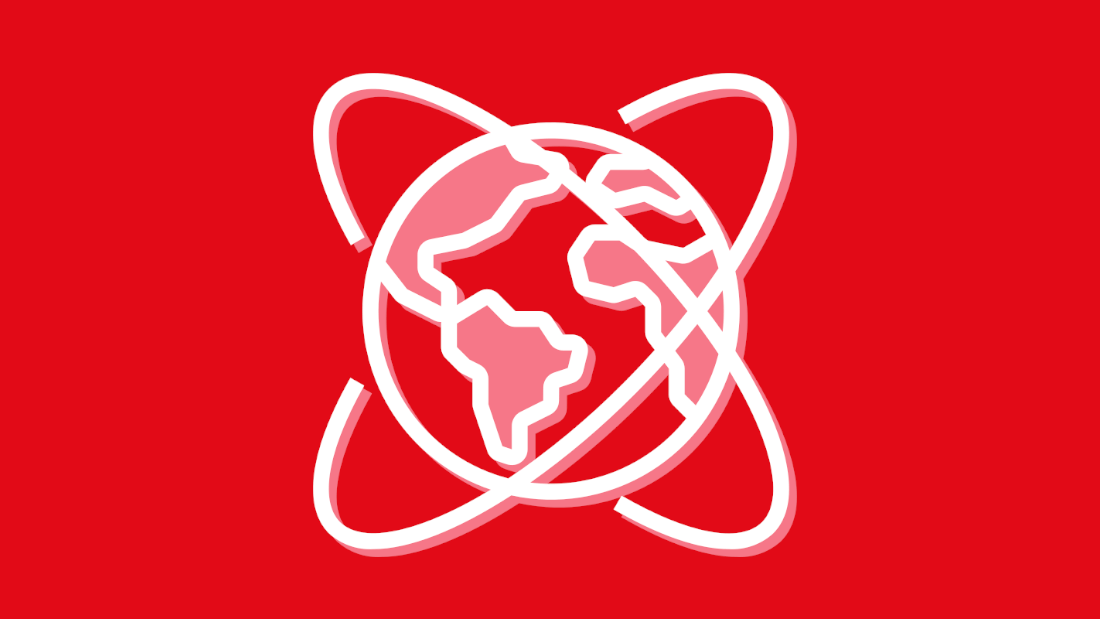International teams can work beautifully with careful management, and there are lessons for us all to learn about remote and hybrid working.
By choice, I’ve spent most of my career working in international teams, and in countries and languages that are not my own.
Despite the challenges, or because of them, that way of life has been a huge privilege. It has enriched every area of my life, and makes me a better designer.
International work is not new. People have been working across great distances for thousands of years. There are well-worn, ancient trade routes across continents, deserts and oceans.
The people who used those routes found ways to communicate with each other. That included language to state intentions, warn of danger, negotiate, solve problems and build lasting relationships. Many modern languages, including English, began as a basic code of communication at trading ports.
Over time, we’ve developed better technology to solve the same problems. In my childhood and the early years of my career, telephone, telegram, radio, mail, and fax were common technologies to work or study across great distances.
Over the last 15 years, advances in portable tech, video tech and internet access in many parts of the world have given us more options for international work and study.
But effective international work is, and has always been, reliant on skills.
Adaptability, curiosity, self-awareness, willingness to make mistakes and ask questions, cultural sensitivity, and the habit of listening more than talking.
Start your international design project with purpose
Here’s my checklist for the beginning of an international project, which I’ll follow with more detail:
- Choose the project’s languages and their uses
- Decide the team's core hours (if any)
- Understand people's working patterns and availability
- Tell each other your localised challenges and ways of balancing work/life
- Decide what tools you'll need, that are equally accessible across the team
- Plan for shared challenges, like time zone differences of +8 hours
- Decide which ceremonies and practices to keep, adapt, or drop
Build a team with the right balance of experience
Consider people’s international experience when you put your project team together.
Most of the people in your team should have international experience. Be prepared to support those who don’t.
If there are people in the team who are new to international work, have a conversation to find out their expectations and worries. Pair them with a mentor in the team who can teach the skills they need.
International workers are excellent digital communicators
You don’t have to be in a room with someone to communicate well. And in an international team, you probably never will be.
Some of the most complex work I’ve done, and the strongest professional relationships I’ve had, have been with people I’ve never met in person. It’s a skill anyone can learn, if they are willing and have good support.
Ideally, everyone in an international team will be able to work just as effectively through digital mediums as they are in person.
If anyone in the team needs to develop that skill, take a positive approach. Find out what their barriers are and work with them to remove those barriers.
There might be aspects of your work, like research with vulnerable people, that are inherently better in person. Decide the criteria for in-person work early and make it exceptional. For example, “We need to collaborate with people who don’t have access to high-speed internet.”
Encourage everyone on the team to own their personal preferences and needs. For example, someone in your team might prefer to work in a room with other people at least once during the week. Or, someone in your team might live in a multi-generational home, and need a quiet space to work.
Respect those preferences and needs by accommodating them without affecting the rest of the team. A local co-working space, for example, could solve both of those problems.
Make equitable decisions
The people in your team do not share the same experience of the world.
For example, there are ‘strong’ and ‘weak’ passports. A strong passport is one which allows access to many other countries without a visa, like a British passport. Weak passports require the holder to acquire a visa to visit most places.
Passport privilege is an expensive, time-consuming, damaging reality for people who have weak passports. People who have strong passports are often unaware that it exists.
I’m fortunate to have 2 strong passports. That means I can enter most countries in the world with no visa, or with a visa that is easy to acquire. It means I am generally treated with dignity, though I am still racially profiled and sexually harassed at some borders.
A person with a weak passport will often find the visa process time-consuming, expensive, intrusive and undignified. If they are granted a visa, people with weak passports are often treated with more hostility at borders.
If travel is required for your project, consider how it will affect team members differently. It might be easier, faster, less expensive, and better for wellbeing if people with strong passports travel. But don’t assume. Make that decision with people, not on their behalf.
Travel can also be a disproportionate burden for disabled team members, particularly when flying.
Consider school times as well. Parents of young children might have different schedules in different countries. Find out people’s variations in schedule early in your project, and give people freedom to manage their time.
Team members might also work with planned and unplanned power outages, depending on their location and circumstances. People working in a place with planned or unplanned outages will already know how to deal with them. So, ask them how best to manage as a team.
Choose your mediums of communication
About 13 years ago, I worked in a business unit of an international company where we decided that if 1 person dials in, everyone dials in.
So, if 10 people joined a meeting and 5 of those people were in the same workplace, those 5 people would join on their laptops with their earphones in. It worked beautifully.
It meant that everyone had a similar experience, and had similar opportunities to contribute and control what they could see and hear.
Use the language everyone understands, not the language most people understand. Decide at the beginning of your project what language to use for documentation, team meetings and team chat. It must be a language that everyone can use comfortably. Don’t defer to the majority language.
For example, if 5 out of 6 people in your team have excellent English while 1 struggles with English, and 6 out of 6 people have functional German, make German your team language. The goal is understanding, not rulebook perfection.
If team members want to use other languages in smaller groups, that’s great. You can usually trust people in an international group to make inclusive, sensible decisions about language.
Learn which apps are blocked, restricted or banned in each person’s location, and choose something that everyone can access.
This can be challenging if team members live or are temporarily located in places where there is severe state censorship, or where large tech companies choose not to comply with privacy and intellectual property laws. However, it can usually be solved with some creativity.
Become fluent in time zones
Do not work in a primary time zone, work across zones. Look at the span of time zones in your team and decide your best collaboration times together.
It helps to decide early in the project which work is synchronous (happening for everyone at the same time) and which is asynchronous (happening for individuals any time).
For example, as a content designer, I might work on developing options for content on my own, asynchronously, and then discuss them in a critique session with the rest of the team as a synchronous task.
Adapt ceremonies to work for your team. Standups don’t have to be in the morning. They don’t have to be synchronous either. I worked in a team where we each wrote our standup list (priorities, blockers) in the team chat near the beginning of our days. It worked.
Give small teams, pairs and individuals freedom to adjust their schedules. A person who has caring responsibilities might prefer a longer day with several long breaks from work. People with an 8+ hour time difference might prefer to have meetings outside both their usual working hours, rather than within 1 person’s usual working day.
As long as people aren’t working excessive hours, freedom to set a schedule is usually beneficial to the person and the project.
Decide what tools you need for easy time zone reference. This is an individual choice. I have several time zones set in my outlook calendar, but it’s not the most intuitive way for me to arrange a meeting. It’s easier and faster for me to check the world clock.
Get into the habit of always writing or saying the time zone. For example, “Let’s meet at 13:00 Accra time / 15:00 Copenhagen time.” Don’t leave people to assume.
Design better with multiple perspectives
An international team is often a more diverse team.
We notice different things when we have different knowledge and experience. The more diverse our team is, the bigger and richer our collective knowledge is.
Diverse perspectives in the team mean we can take a more mature product to usability testing. That’s because we’ll see our research from different angles. We’ll notice or question different things during the design process, leading us to a more considered prototype.
And we get richer, more targeted, more actionable user insight if we show people a more considered product. Which means we can do more work, of better quality, in less time.



